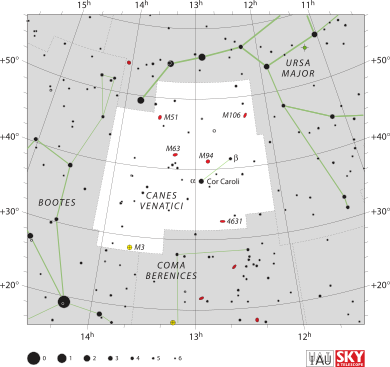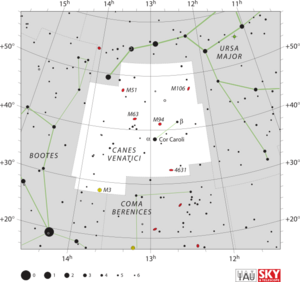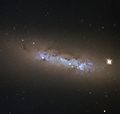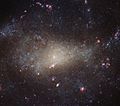Canes Venatici facts for kids
| Constellation | |

List of stars in Canes Venatici
|
|
| Abbreviation | CVn |
|---|---|
| Genitive | Canum Venaticorum |
| Pronunciation | Cánes Venátici, genitive |
| Symbolism | the Hunting Dogs |
| Right ascension | 13 |
| Declination | +40 |
| Quadrant | NQ3 |
| Area | 465 sq. deg. (38th) |
| Main stars | 2 |
| Bayer/Flamsteed stars |
21 |
| Stars with planets | 4 |
| Stars brighter than 3.00m | 1 |
| Stars within 10.00 pc (32.62 ly) | 2 |
| Brightest star | Cor Caroli (α CVn) (2.90m) |
| Messier objects | 5 |
| Meteor showers | Canes Venaticids |
| Bordering constellations |
Ursa Major Boötes Coma Berenices |
| Visible at latitudes between +90° and −40°. Best visible at 21:00 (9 p.m.) during the month of May. |
|
Canes Venatici is a small constellation in the northern sky. Its name means "the hunting dogs" in Latin. A Polish astronomer named Johannes Hevelius created and named this constellation in 1687. Before that, in the 2nd century, the astronomer Ptolemy had included these stars as part of the larger Ursa Major constellation. Canes Venatici is not a very bright constellation to see in the night sky.
Contents
Exploring Deep-Sky Objects in Canes Venatici
Deep-sky objects are things in space that are not single stars or planets. They include galaxies, star clusters, and nebulae. Canes Venatici is home to several interesting deep-sky objects.
Famous Galaxies to Discover
- Messier 3: This is a beautiful globular cluster. It contains hundreds of thousands of stars.
- Messier 106: This is a spiral galaxy. It is about 22 million light-years away from us.
- Sunflower Galaxy: This is another spiral galaxy. It gets its name from its bright, petal-like arms.
- Whirlpool Galaxy: Also known as Messier 51, this is a famous interacting spiral galaxy. It looks like a whirlpool in space.
Images for kids
-
Canes Venatici as drawn by Johannes Hevelius in his star atlas. The image is mirrored.
-
Messier 51, the Whirlpool Galaxy, photographed by the Hubble Space Telescope.
-
NGC 4631 photographed by the Hubble Space Telescope.
See also
 In Spanish: Canes Venatici para niños
In Spanish: Canes Venatici para niños







